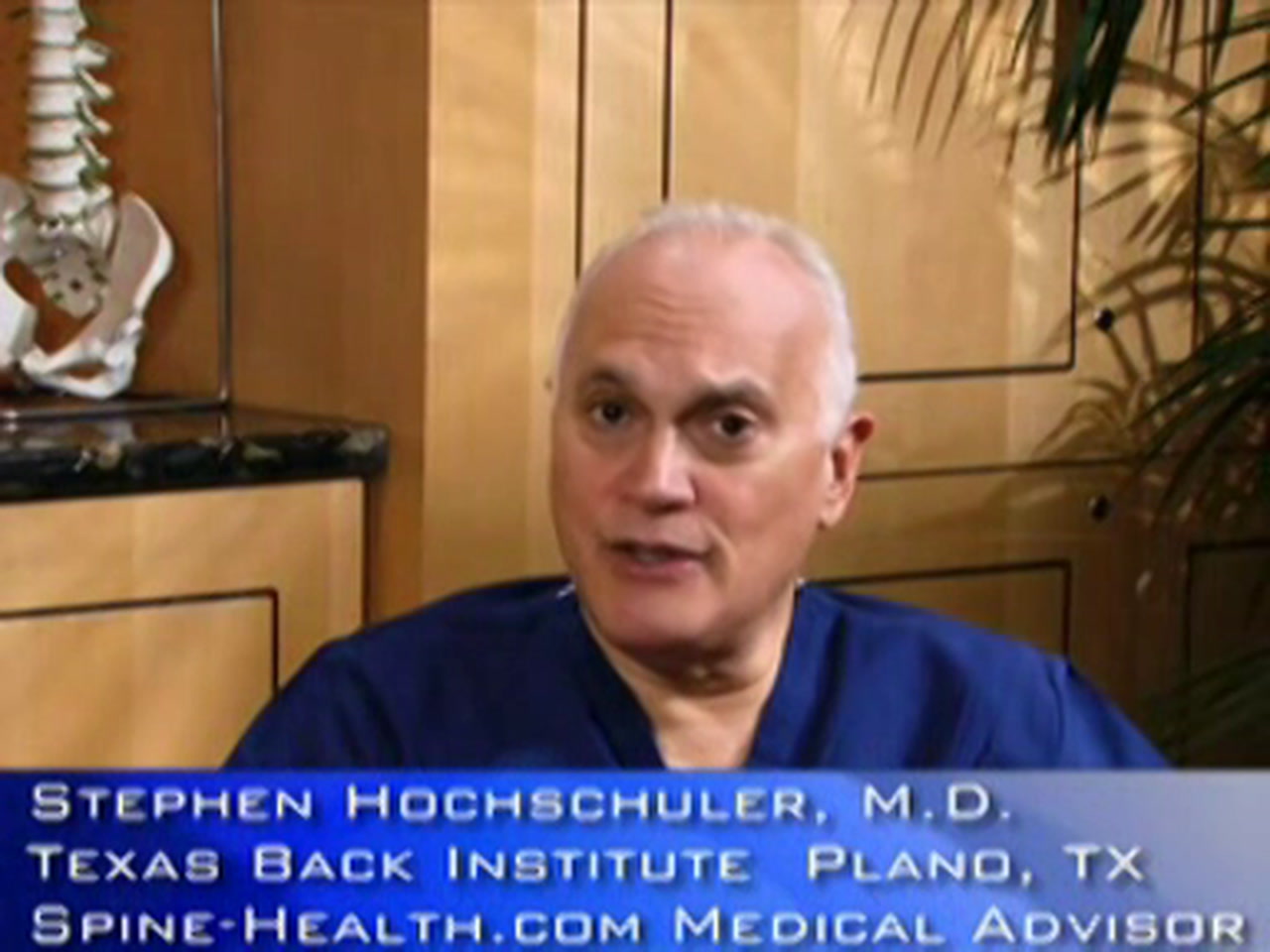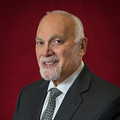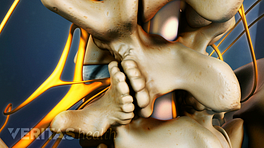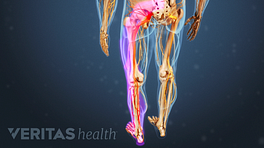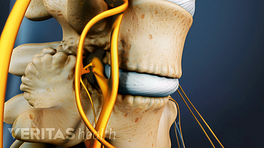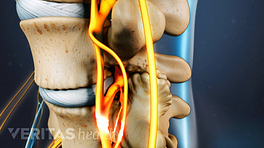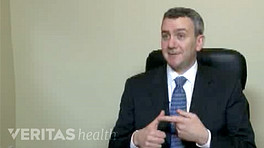I’m Dr. Stephen Hochschuler, co-founder of the Texas Back Institute. I’ve been asked today to speak about spinal stenosis.
Spinal stenosis is a condition where the normal size of the spinal canal has been compromised, such that it’s smaller. There are three aspects to the spinal canal. There’s the central part of the spinal canal itself, there’s the lateral aspect of the spinal canal, the sides, and then there’s the part of the spinal canal where the nerves go out from, called the neuroforamen. One could get stenosis, or a tightening, from any one of these three areas.
One could also get stenosis from a slip of one vertebra on the other, that’s called spondylolisthesis. And if the vertebrae are normally aligned one on top of the other, one can imagine if the nerves are running behind this area, if you were to get a slip, there’d be a pulling on the nerves.
The treatment of spinal stenosis varies. It depends on how much pain the patient is having and for how long the patient has had the pain. Initially, simple things like an anti-inflammatory medication, such as Advil or Aleve, sometimes Tylenol, minor pain medications, change in positioning will help.
Usually a patient with spinal stenosis has more pain when standing upright or walking with relief when bending forward. If one is on a stationary bicycle and one has spinal stenosis, usually there are no symptoms, whereas if indeed the patient’s pain is associated with a vascular problem, riding on a bicycle will not help. So one can differentiate spinal stenosis and pain down one’s leg, associated with narrowing of the canal, as compared to pain down your leg from a vascular problem in that when you have it from a vascular problem, any exercise hurts. Whereas if it's from stenosis, usually exercise in a flex position doesn’t hurt.
Treatment of spinal stenosis varies, from the simple things I mentioned a moment ago, to what’s called an epidural steroid injection or cortisone injection, which, hopefully, cuts back some of the swelling around the nerves and gives you a relative expansion of the canal.
Another alternative would be surgical, where one goes in surgically and opens up the canal. This can be seen and viewed from other aspects at Spine-health. Thank you.
